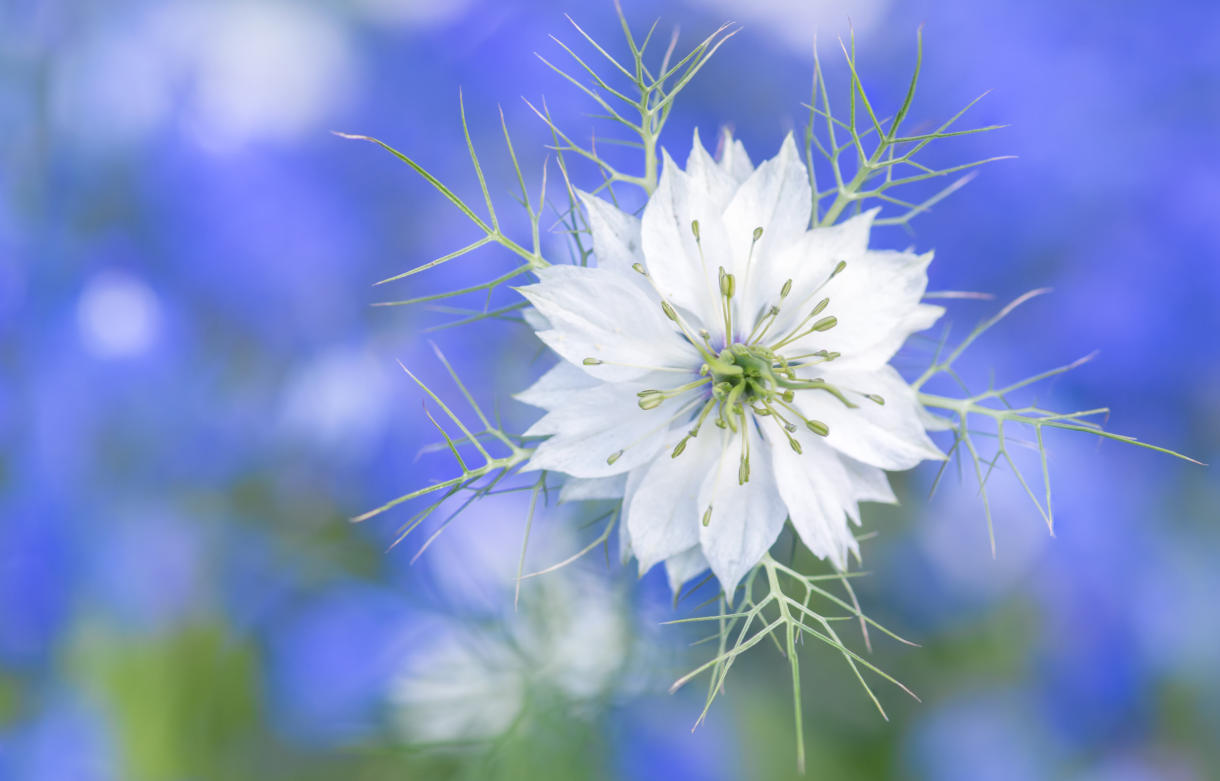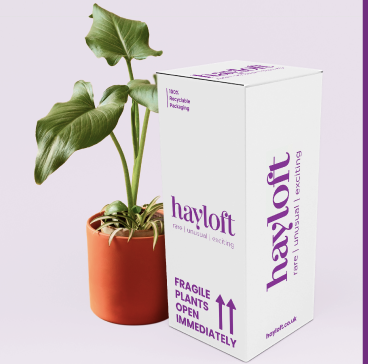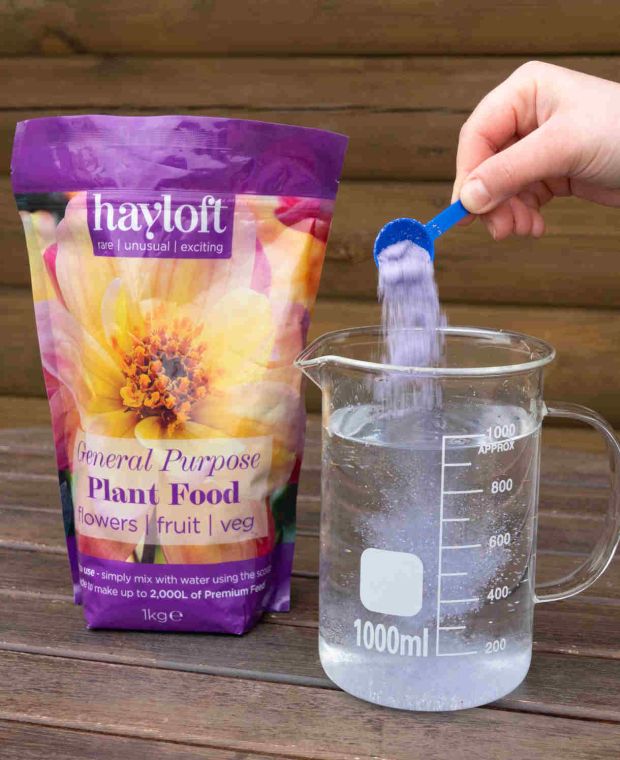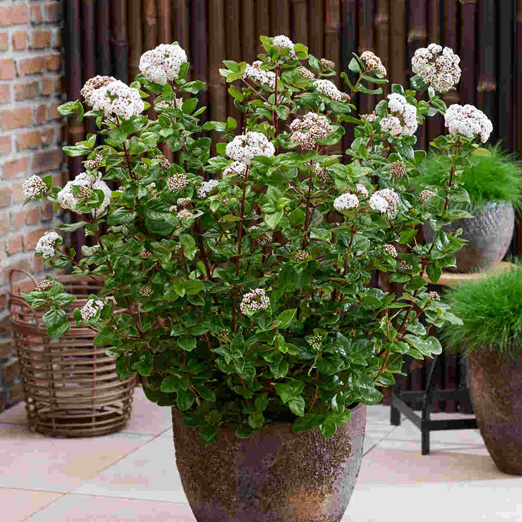How to grow Nigella
Also known as love-in-a-mist, nigella is a genus of flowering, bushy annuals native to Southern Europe, North Africa, South Asia, Southwest Asia and the Middle East. It has fine, feathery foliage in which its distinctive ‘ruffed’ flowers appear to float, as alluded to in the common name. Over time, the flowers give way to attractive seedpods – also part of the appeal and popular in dried arrangements.
This hardy annual grows quickly, requires little attention, and will often self-seed to come back year after year. Though hardy annuals can be grown easily from seed, we know it’s not always possible to get round to doing this at the right moment. Our young plug plants offer an easy, ready-to-go alternative, sent out during the spring planting season. We plan ahead so you don’t have to!
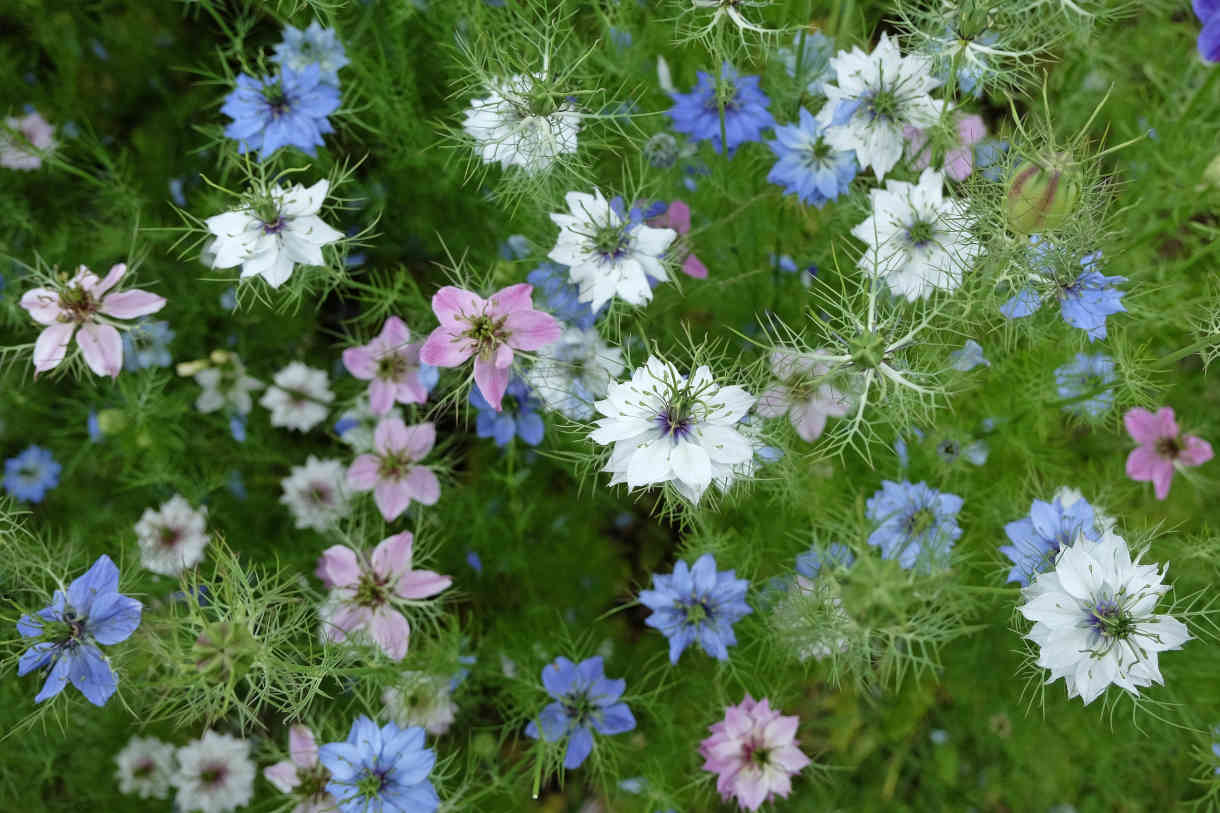
Zantedeschia is a genus of flowering plants from the family Araceae and is native to southern Africa. With a rich history dating back to the Ancient Romans, these deciduous or semi-evergreen perennials have been used as a symbol of celebration. Zantedeschia was Named after Professor Giovanni Zantedeschia, an Italian botanist.
There are two main forms of Zantedeschia: hardy and tender. Hardy forms of the plant can be grown outdoors, enjoy moist soil and full sun or partially shaded conditions - these are known as Arum lilies. Tender forms of Zantedeschia prefer being grown in containers or pots and should be brought inside over the winter - these are known as Calla lilies.
With tuberous flora in all colours from whites, yellows and oranges to deep reds and purples, Zantedeschias are not to be overlooked in any garden, as long as they have sufficient sunlight to grow in.
Ready to learn more about growing Zantedeschia? Read on for all there is to know...
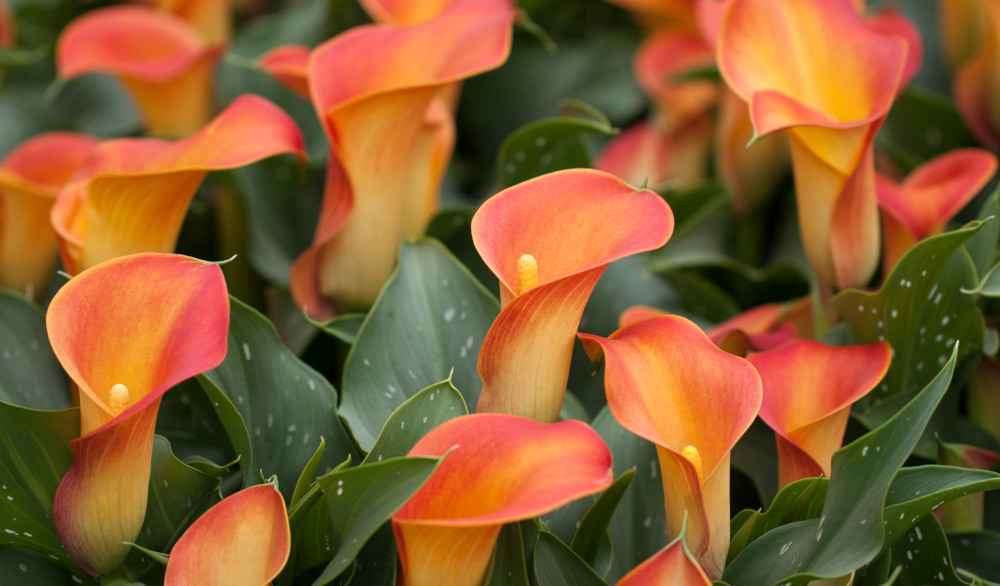
Key Information
Soil pH
Position
Hardiness

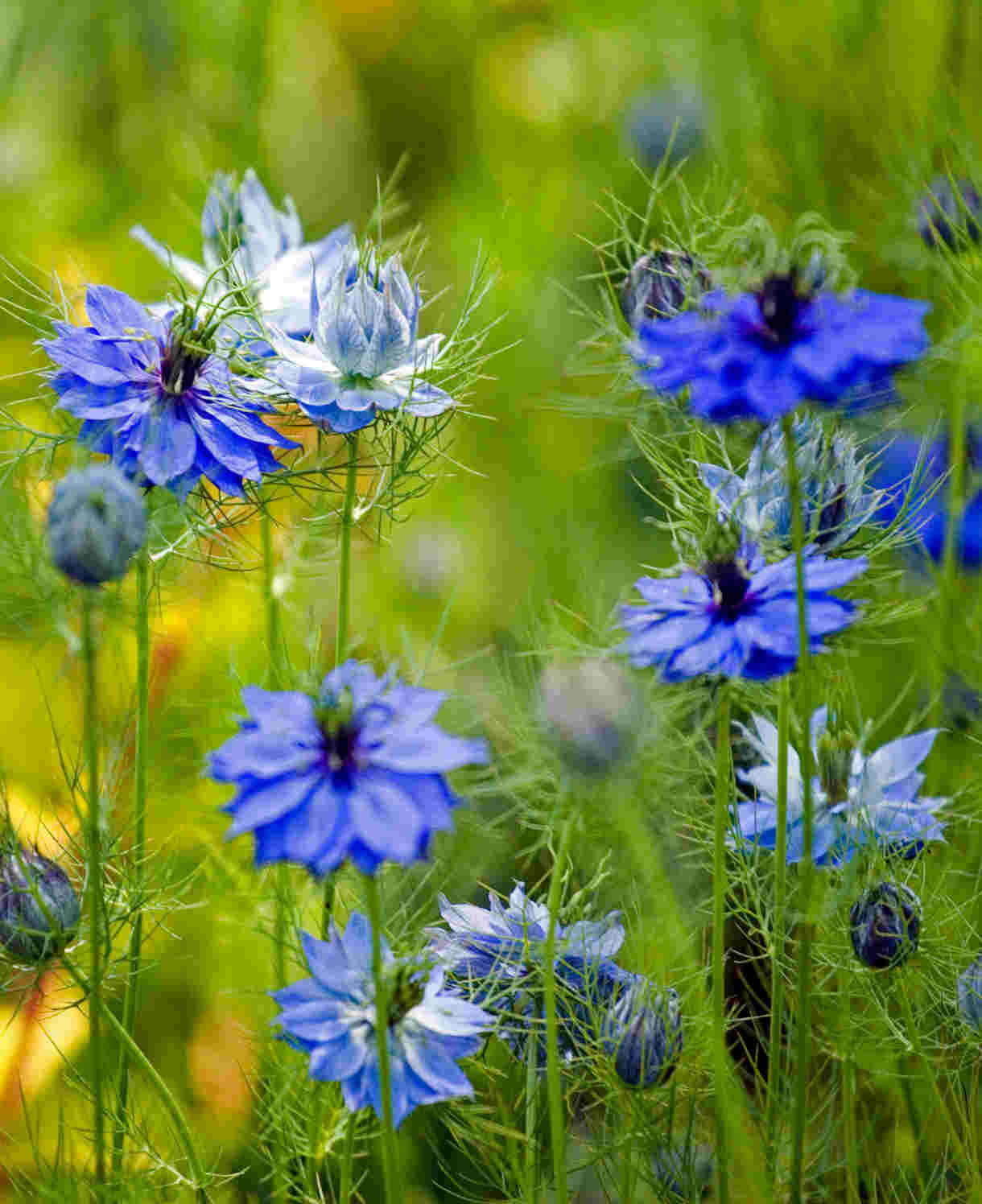
Where & when to plant Nigella
Position - A sunny spot is best. Nigella will have a good go at growing in partial shade, though will overall be weaker and less floriferous.
Soil - Almost any soil apart from very wet. Poor, dry soil is fine, though expect it to result in shorter plants with smaller flowers.
Flowering Period - Summer
Hardiness - Half-hardy, rated H3 (1 to -5°C).
We send our nigella out as 4cm young plants (or plugs) in spring. These can either be planted out straight into the garden (go for it if the weather is mild and you have well-draining soil) or potted up and grown on indoors or under cover for a few weeks (advisable in harsh or very wet conditions).
Weave this cottage garden classic throughout beds and borders, plugging any gaps or holes in the existing planting (nigella is particularly useful in taking over from spring bulbs). Alternatively, include it in a cut flower garden; the flowers make excellent, long-lasting cut flowers and the seedpods are popular in arrangements too. Nigella can also be grown in a container.
How to plant Nigella
· For planting in the garden, dig the soil area removing any large stones and weeds and breaking up any lumps.
· Rake level and firm with your heels. Rake level again.
· Water plants well and allow to drain before planting.
· Dig a hole twice the width of the root-ball.
· Place the plant in the hole, ensuring the top of the root ball sits level with the surface of the soil. Too low and the plant may rot, too high and the roots can dry out.
· Backfill with soil and firm in gently.
· Soak well with water.
· Mulch around the base with well-rotted organic matter.
· For planting in a container, first choose an appropriately sized pot. You may wish to grow nigella on its own or as part of a larger mixed display. Either way, ensure there are plenty of drainage holes in the bottom.
· If you are using a large or heavy pot, it can be a good idea to fill and plant it in situ to save yourself the trouble of moving once full.
· Use a good quality potting compost with some horticultural grit mixed in and, if not already present (check the labelling on the bag) some slow-release fertiliser granules.
· Start by partially filling the pot with compost; enough so that when placed on it the upper surface of the root ball is about 3cm lower than the top of the pot.
· Fill around the plant with compost, firming down with your fingers then adding a little more so it is held tight.
· Pick up the container (if you can!) and lightly tap on the potting bench or ground a few times to help further settle the compost around the plant.
· Soak well with water.
· A mulch with horticultural grit will look attractive and help to prevent a ‘cap’ or crust forming on the top of the compost (something container plants can suffer due to the artificial nature of their watering).
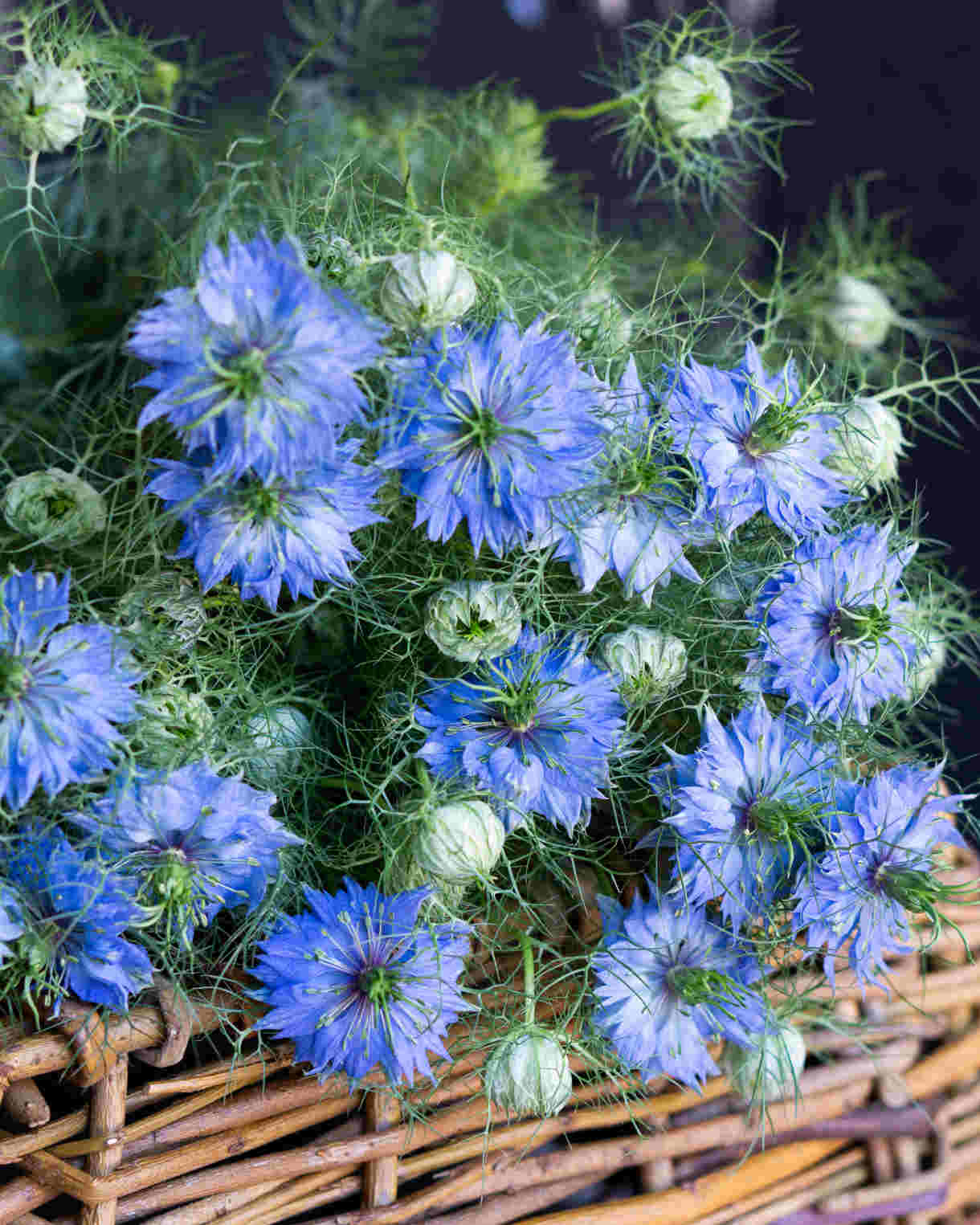
What to plant with Nigella
Team nigella up with other hardy annuals such as ammi, cerinthe, and sweet peas, popping them in the ground wherever you see a gap. This one small act of planting each spring can make an astounding difference to your garden during the summer months.
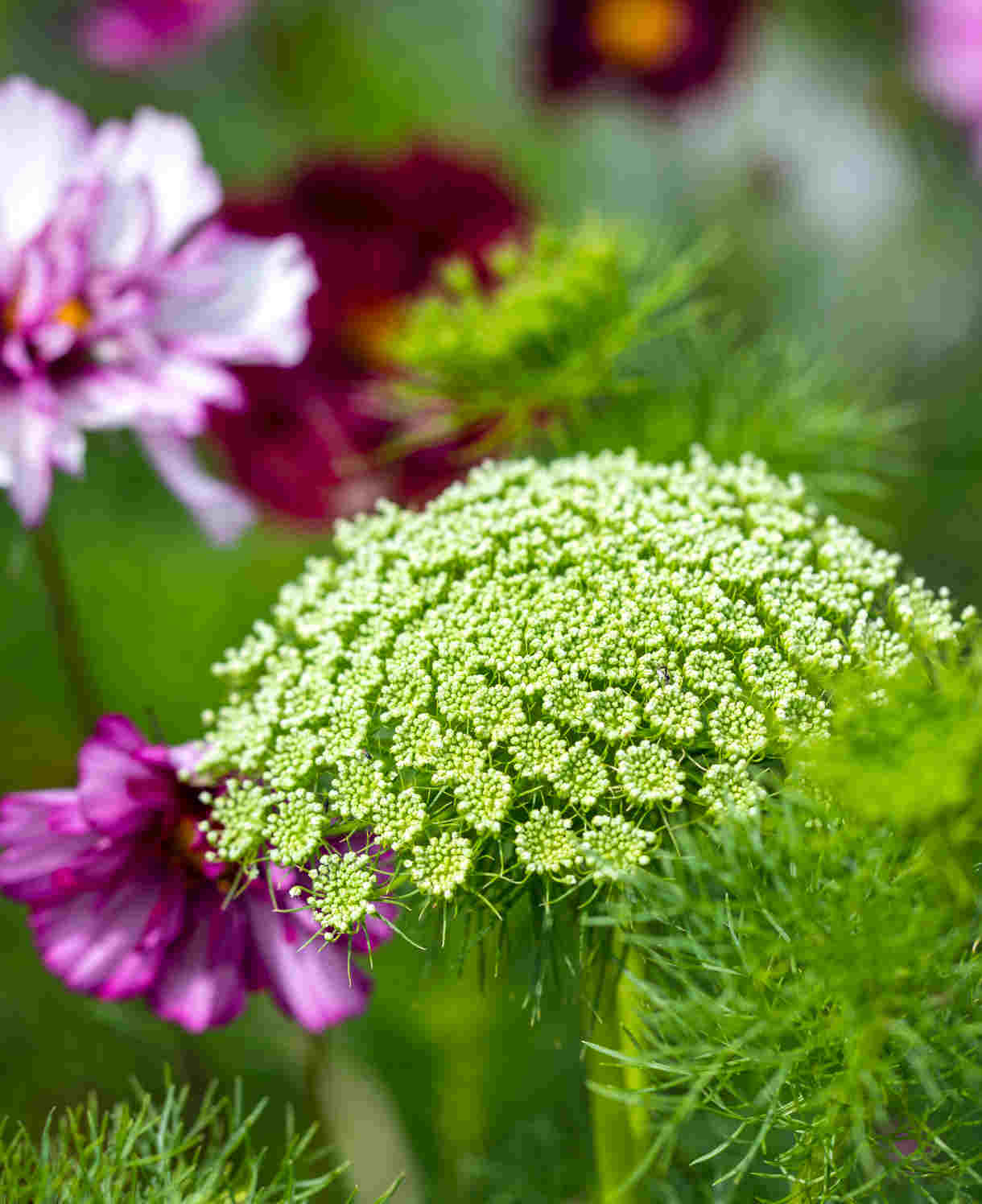
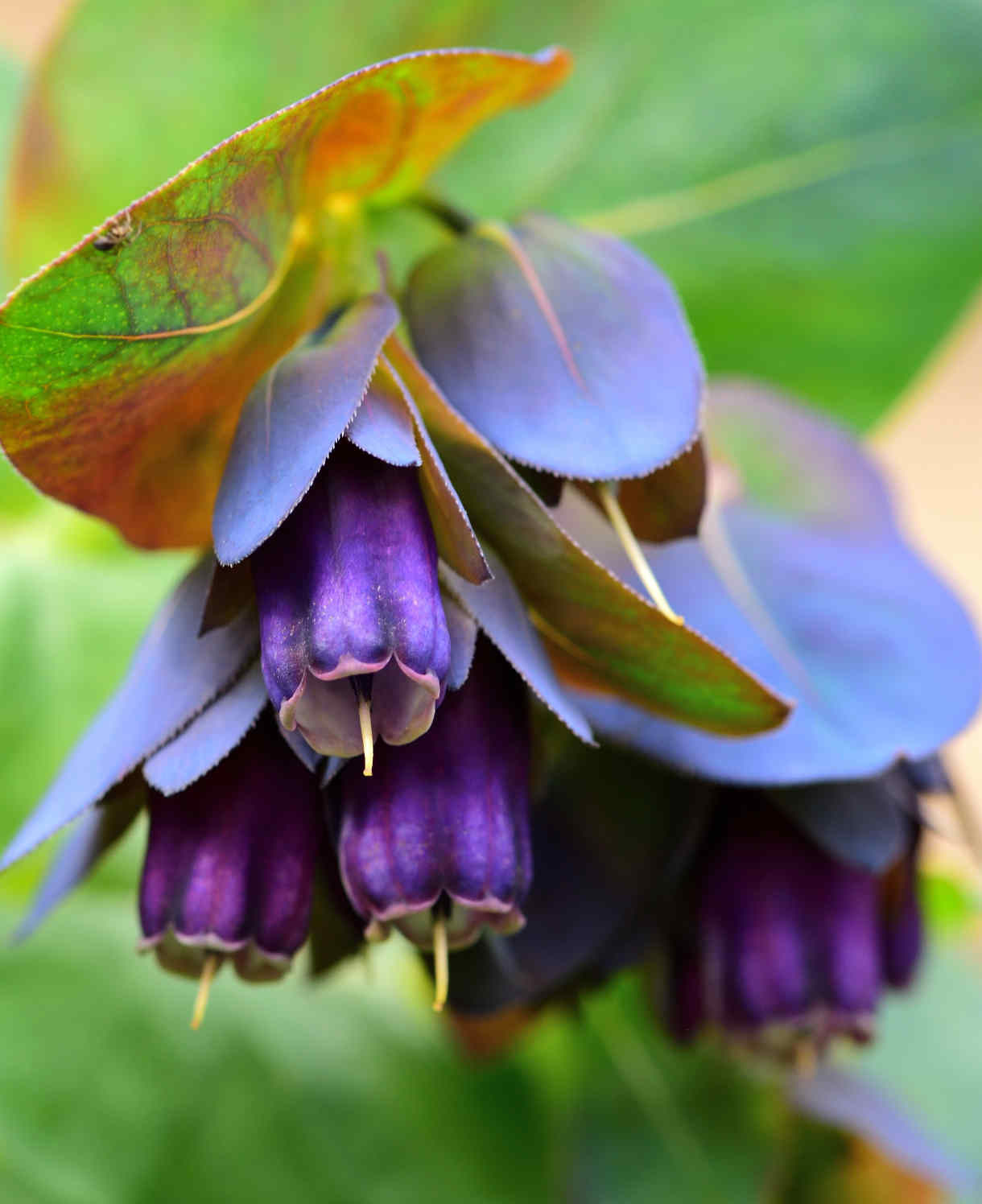
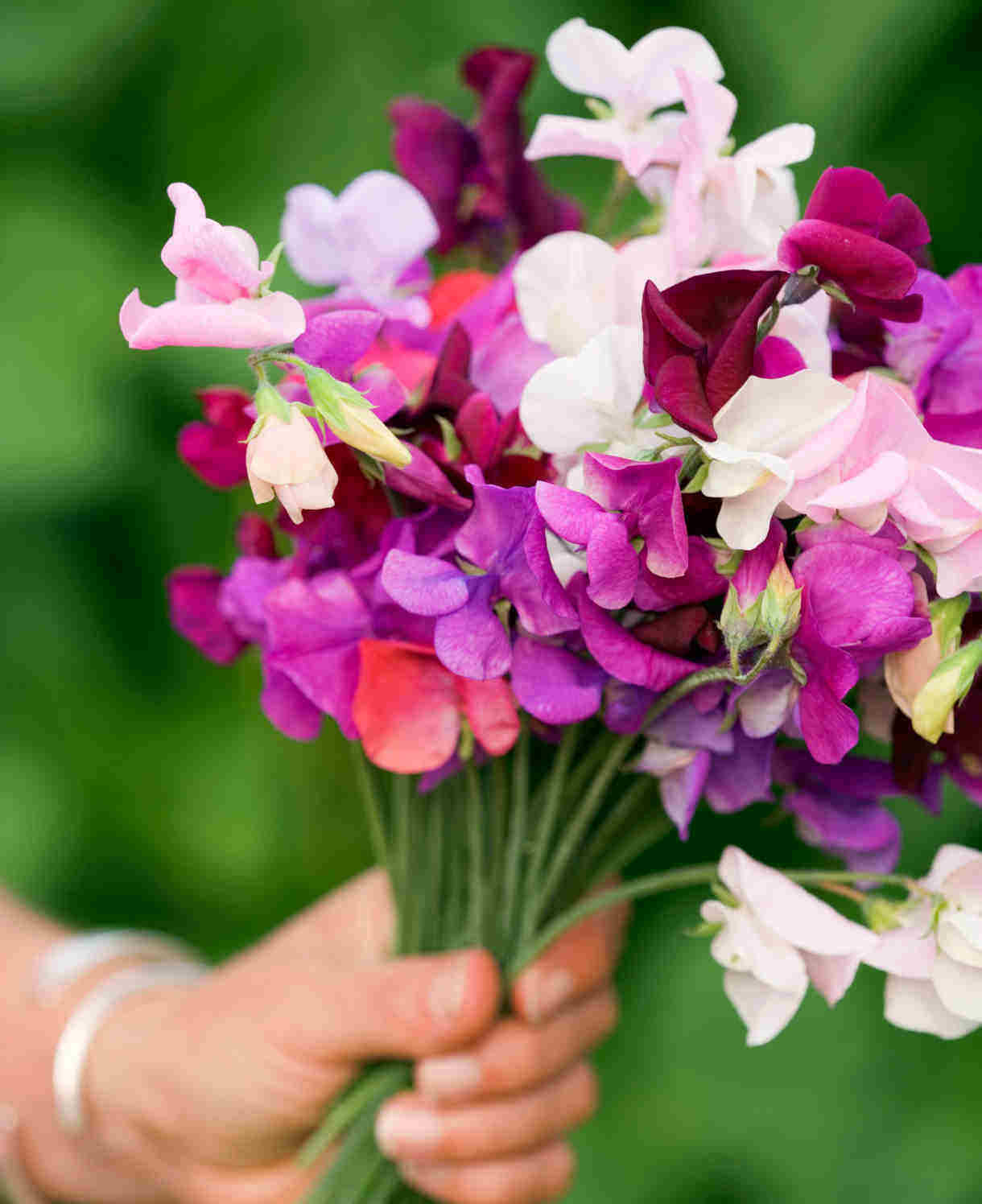
How to care for Nigella
Pruning and Deadheading
Nigella is often referred to as ‘plant and leave’, due to the exceptionally low level of maintenance required. Yes, deadheading will give you more flowers, but with such attractive seedpods many gardeners choose not to intervene in this way.
Leave plants intact until the end of the growing season, at which point they may simply be removed to the compost heap.
Watering
Young nigella plants planted in the ground should be given a good watering in on planting, followed by a layer of mulch to lock the moisture in (see next section for more on this). After this they should need watering only in very hot, dry periods.
With a more limited root run, nigella in a container requires regular watering throughout the growing season. To avoid overwatering, a good rule of thumb is to allow the top couple of centimetres to dry out between soakings. To check this, wiggle your finger down into the compost until you feel moisture. Be aware that in the height of summer containers can need watering every day, particularly those in full sun.
Feeding
In healthy, fertile soil, there should be enough nutrients to power nigella through a growing season without the need for additional feeding. Having said this, a mulch of well-rotted organic matter (i.e., a layer of leaf mould, manure, or garden compost applied to the soil around the plant) can be useful in suppressing weeds and locking in moisture, and the extra nutrients certainly won’t do any harm. Make mulching the final stage of planting, after watering.
Container-grown plants are different as they rely solely on the gardener for nutrition. Get off to a flying start by making sure you use a good quality compost with slow-release granules mixed in. These generally provide nutrients for around 6 to 8 weeks, after which you’ll need to apply a balanced liquid feed every 2-3 weeks until the end of the growing season (i.e., September-ish).
Cold Protection
Nigella can be damaged by harsh weather when young. If you garden in a frost pocket or northern part of the UK, either delay planting out until late spring/ early summer or protect new plantings with a cloche or fleece whenever a hard frost is forecast.
Pests and Diseases
Nigella is considered trouble free. As an annual, it doesn’t live long enough to be bothered by pests or diseases.
How to propagate Nigella
Nigella is best propagated by seed, sown directly into the soil in either autumn or spring. An autumn sowing is suitable for milder parts of the country and will result in bigger, tougher, earlier-flowering plants, though it’s worth noting that the seedlings may need protecting with a cloche or fleece in harsh winter weather. A spring sowing is better if you live further north or are prone to very cold, wet winters. Look out for weed seeds beginning to germinate in the garden – a good indicator that the soil is warm enough to get sowing.
1. Seeds are typically ready for collecting in late summer when the pods have turned brown and papery and the seeds inside are black.
2. Snip the seedheads from the plant using scissors or secateurs. Try to do this in dry conditions, and shake the seeds into a small, labelled paper bag or envelope. Store somewhere cool and dry until you are ready to sow in either autumn or spring.
3. Clear the area of weeds, and rake over the surface until you have a fine tilth.
4. Scatter seeds thinly.
5. Lightly rake over to incorporate with the soil.
6. Water with a watering can fitted with a fine rose.
7. When seedlings are large enough to handle, thin out to a spacing of approximately 10-15 centimetres.
* Many plants carry Plant Breeders Rights and cannot be propagated for commercial purposes.
Common Nigella Questions
· Can you grow nigella in pots?
Yes, just make sure you keep them well-watered and fed. In this situation you may also wish to deadhead, in order to prolong the display of colour for as long as possible.
· Is nigella easy to grow from seed?
Nigella is one of the easiest plants to grow from seed, and is often recommended for children and novice gardeners.
· What plant family is nigella in?
Nigella is in Ranunculaceae, the buttercup family. Other members include clematis, aquilegia, delphinium, and thalictrum.
